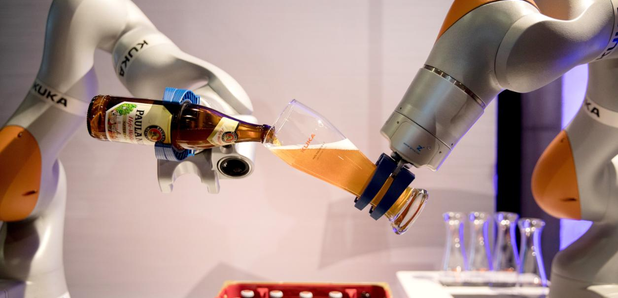'Cyborg-working' the way forward
8 March 2019, 08:43 | Updated: 8 March 2019, 08:46

Worried about robots taking our jobs? Relax! Research from the University of Essex says we'll fare better if humans and artificial intelligence work together.
A study has found 'cyborg-working' - where humans and machines operate as a team - could really improve our decision-making.
It is the first study where humans and machines have acted together as peers to make decisions in a realistic scenario.
Its findings suggest potential applications in numerous areas including medicine, finance and counter-terrorism.
The research was completed by Dr Davide Valeriani, previously Senior Research Officer at Essex and now a Research Fellow at Harvard Medical School, and Professor Riccardo Poli, from the School of Computer Science and Electronic Engineering at Essex.
In this study they focus on facial recognition and build on their previous work on Brain Computer Interfaces (BCIs).
Dr Valeriani said: "Humans and machines already work side-by-side in many areas, but the final decision currently rests with one or the other.
"The use of a single arbiter has been shown to result in worse decisions. This research shows the benefits available when humans and machines work together, as peers, on the same task. Humans have specific strengths, machines have others - by bringing these different skills to the party we get more than the sum of the parts."
Participants in the study were shown a sequence of almost three hundred security camera-style images and asked, after each image, if they had spotted a particular face among the many present in each image - what made the task even more difficult was that each image was shown for only a fraction of a second.
The experiment was then repeated, with the human participants supported by two new types of AI, developed specifically for this study.
The first of these is a Brain-Computer Interface (BCI) that uses sensors on the scalp to measure the electrical activity of the user's brains, and machine-learning algorithms to estimate how likely the decision of each user is to be correct, known as 'decision confidence'. This information can be used to weigh each team member's response. The study shows that weighing individual decisions on the basis of this BCI-based confidence improves the accuracy of a group's collective decision-making.
The second new type of AI is a fully-autonomous deep learning algorithm, called a Residual Neural Network, that uses computer vision to extract faces from the security camera images and compares them with the image of the target individual. The Residual Neural Network operates independently of the human participants and estimates its own decision confidence.
Visual searches, where we look for a specific person or object within a scene, are a common feature of everyday life - examples range from the frantic morning search for your keys, to airport staff inspecting the contents of luggage.
Previous studies have shown humans to be surprisingly fallible in these situations. Factors affecting our underperformance include fatigue and the tendency to focus on one thing to the exclusion of others.
The individual humans in this study achieved an average 72% accuracy. The Residual Neural Network, operating alone, scored 84%. Groups of humans assisted by the new types of AI scored highest of all options studied.






















